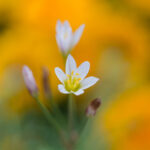Vivitar 55mm F/2.8 [MC] [Auto] Macro
aka Elicar V-HQ 55mm F/2.8 MC Macro
aka Rokunar V-HQ 55mm F/2.8 MC Macro
Macro lens • Film era • Discontinued
Abbreviations
| MC | Multi-layer anti-reflection coating is applied to the surfaces of lens elements. This anti-reflection coating increases light transmission, eliminates flare and ghosting, and maintains color consistence among all lens models. |
| MACRO | Macro lens. Designed specially for shooting close-ups of small subjects but can be also used in other genres of photography, not necessarily requiring focusing at close distances. Learn more |
Features highlight


Specification
| Production details: | |
| Announced: | 1975 |
| Production status: | ● Discontinued |
| Original name: | Vivitar 55MM 1:2.8 AUTO MACRO |
| Vivitar 55MM 1:2.8 MC MACRO | |
| System: | - |
| Optical design: | |
| Focal length: | 55mm |
| Speed: | F/2.8 |
| Maximum format: | 35mm full frame |
| Mount and Flange focal distance: | Canon FD [42mm] |
| Contax/Yashica [45.5mm] | |
| Konica AR [40.5mm] | |
| M42 [45.5mm] | |
| Minolta SR [43.5mm] | |
| Nikon F [46.5mm] | |
| Olympus OM [46mm] | |
| Pentax K [45.5mm] | |
| Diagonal angle of view: | 42.9° |
| Lens construction: | 5 elements in 4 groups |
| On Nikon D APS-C [1.53x] cameras: | |
| 35mm equivalent focal length: | 84.2mm (in terms of field of view) |
| 35mm equivalent speed: | F/4.3 (in terms of depth of field) |
| Diagonal angle of view: | 28.8° |
| On Pentax K APS-C [1.53x] cameras: | |
| 35mm equivalent focal length: | 84.2mm (in terms of field of view) |
| 35mm equivalent speed: | F/4.3 (in terms of depth of field) |
| Diagonal angle of view: | 28.8° |
| Diaphragm mechanism: | |
| Diaphragm type: | Automatic |
| Aperture control: | Aperture ring (with or without Auto Exposure setting) |
| Number of blades: | 6 (six) |
| Focusing: | |
| Closest focusing distance: | 0.215m |
| Magnification ratio: | 1:1 at the closest focusing distance |
| Focusing modes: | Manual focus only |
| Manual focus control: | Focusing ring |
| Physical characteristics: | |
| Weight: | 312g (mount not specified) |
| Maximum diameter x Length: | ⌀70×63.5mm (mount not specified) |
| Accessories: | |
| Filters: | Screw-type 62mm |
| Lens hood: | Not available |
| Teleconverters: | <No data> |
| Source of data: | |
| Manufacturer's technical data. | |
Manufacturer description #1
A normal lens with the unique capabilities of macro with no extenders or adapters required. Gives life-size reproduction of 1:1. 5 element, 4 group lens construction. High resolution at all magnification ratios. All the advantages of a normal lens plus macro in just one lens.
Manufacturer description #2
Offers standard focal length (55mm) with fast, f2.8 aperture. Fast enough for most every day lighting situations.
1:1 (lifesize) reproduction ratio with no switches or adapters makes this an ideal lens for copy work and other macro photography.
Maximum contrast and resolution. Multi-coated to reduce flare.
Vivitar Accessories: 62mm Filters, Step-up Adapter Rings, Close-up Sets, Lens Hoods, 100mm Hard Lens Case and Small Pouch Case. Accepts Vivitar 2X Macro Teleconverter for an incredible reproduction ratio of 2:1 and regular Vivitar 2X and 3X teleconverters.
Manufacturer description #3
From the owner's manual:
Many cameras today have an EE feature which automatically determines the correct aperture for a given photographic situation when a specific shutter speed is selected. Some Vivitar Automatic Lenses designed with EE coupling mechanisms have an EE Lock Button to ensure that the lens is not accidentally removed from EE operation. On these lenses, the Aperture Ring locks with a positive click when placed in the "EE" position. When you wish to set the aperture manually, press the EE Lock Button to move the Aperture Ring from the "EE" position.
From the Camera magazine (1975)
... One sophisticated example of such a design is Vivitar's 90-mm Macro f:2.5 of 8 elements (7 groups) where the rear two elements move backwards during the focusing movement from infinity to 1:2 reproduction. Unusual in this system is the fact that a macro adapter to extend the focusing range to 1:1 scale also incorporates 3 elements (usually such macro adapters are simply extension tubes); in the focusing range between half size and 1:1 scale both the lens's own rear group and the macro adapter become floating elements.
Vivitar also has a new 55-mm f:2.8 macro lens which focuses down to 1:1 (life size) images without any adapter utilizing what appears to be a differential movement of the front and rear of three and two elements respectively. Both these Vivitar lenses are available in mounts to fit most 35-mm reflexes (Nikon, Canon, Minolta, Konica, Olympus OM and 42-mm screw mount cameras).
From the Journal of Applied Photographic Engineering (1975)
Ponder & Best., Inc., has expanded its family of Vivitar Automatic Fixed Mount Lenses with the introduction of four versatile new accessory lenses - an 85-205mm f/3.8 macro focusing zoom with a unique close-up capability, a fast 55mm f2.8 macro lens with 1:1 (life-size close-up) capability without extender, a 24mm f2.8 wide angle lens, and a 300mm f5.6 telephoto.
From the editor
Initially, the lens was marked as AUTO MACRO, but approximately from the mid-1980s it became MC MACRO.
The same lens was sold under the names ELICAR V-HQ MACRO MC 55mm f/2.8 and ROKUNAR V-HQ MACRO MC 55mm f/2.8.
Notes
- Independent-brand lenses were made for 35mm film SLR cameras by companies that competed with the camera manufacturers. Some came from factories that made lenses under their own brand names (Angenieux, Kiron, Sigma, Tamron, Tokina). Many others were national and international marketing organizations (Kalimar, Panagor, Rokunar, Soligor, Starblitz) that bought lenses from anonymous manufacturers. One firm — Vivitar — actually designed its own lenses and accessories, which were then subcontracted to manufacturing firms. Still others were private labels, sold only by specific photo specialty shops (Cambron, Quantaray, Spiratone).
- The actual manufacturer of a Vivitar lens can be identified by the first digits of the serial number: 09 - Cosina, 13 - Schneider-Kreuznach, 19 - Sigma, 22 - Kino Precision Industries, 25 - Ozone Optical, 28 - Komine, 32 - Makina Optical, 33 - Asanuma, 37 - Tokina, 42 - Eugen Bauer, 44 - Perkin Elmer, 47 - Chinon, 51 - Tokyo Trading, 56 - Kyoe Shoji, 61 - Samyang, 6x - Olympus, 75 - Hoya, 77 - Kobori, 81 - Polar, 9x - Cosina. This numbering system, however, was used by Vivitar only between 1969 and 1991 (approx.).
- This Vivitar lens has s/n 28xxxxxx, therefore it was produced by Komine.
Lenses with similar focal length
Sorted by manufacturer name
![Vivitar 55mm F/2.8 [MC] [Auto] Macro](https://lens-db.com/wp-content/uploads/2013/02/V55F28-04-1086x1160.jpg)
![Vivitar 55mm F/2.8 [MC] [Auto] Macro](https://lens-db.com/wp-content/uploads/2013/02/Vivitar-55-F28-01-79x150.jpg)
![Vivitar 55mm F/2.8 [MC] [Auto] Macro](https://lens-db.com/wp-content/uploads/2013/02/Vivitar-55-F28-MC-Macro-01-103x150.jpg)
![Vivitar 55mm F/2.8 [MC] [Auto] Macro](https://lens-db.com/wp-content/uploads/2013/02/Vivitar-55-F28-MC-Macro-02-102x150.jpg)
![Vivitar 55mm F/2.8 [MC] [Auto] Macro](https://lens-db.com/wp-content/uploads/2013/02/Vivitar-55-F28-MC-Macro-03-105x150.jpg)
![Vivitar 55mm F/2.8 [MC] [Auto] Macro](https://lens-db.com/wp-content/uploads/2013/02/Vivitar-55-F28-MC-Macro-04-104x150.jpg)
![Vivitar 55mm F/2.8 [MC] [Auto] Macro](https://lens-db.com/wp-content/uploads/2013/02/Vivitar-55-F28-MC-Macro-05-174x150.jpg)
![Vivitar 55mm F/2.8 [MC] [Auto] Macro](https://lens-db.com/wp-content/uploads/2013/02/Vivitar-55-F28-MC-Macro-06-159x150.jpg)
![Vivitar 55mm F/2.8 [MC] [Auto] Macro](https://lens-db.com/wp-content/uploads/2013/02/Vivitar-55-F28-MC-Macro-07-177x150.jpg)
![Vivitar 55mm F/2.8 [MC] [Auto] Macro](https://lens-db.com/wp-content/uploads/2013/02/Vivitar-55-F28-MC-Macro-08-151x150.jpg)
![Vivitar 55mm F/2.8 [MC] [Auto] Macro](https://lens-db.com/wp-content/uploads/2013/02/V55F28-01-83x150.jpg)
![Vivitar 55mm F/2.8 [MC] [Auto] Macro](https://lens-db.com/wp-content/uploads/2013/02/V55F28-02-151x150.jpg)
![Vivitar 55mm F/2.8 [MC] [Auto] Macro](https://lens-db.com/wp-content/uploads/2013/02/V55F28-03-150x150.jpg)
![Vivitar 55mm F/2.8 [MC] [Auto] Macro](https://lens-db.com/wp-content/uploads/2013/02/V55F28-05-142x150.jpg)




